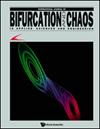Bifurcation Analysis of a New Aquatic Ecological Model with Aggregation Effect and Harvesting
IF 2.3
4区 数学
Q2 MATHEMATICS, INTERDISCIPLINARY APPLICATIONS
引用次数: 0
Abstract
In this paper, we investigated the dynamics of the interaction between Microcystis aeruginosa and filter-feeding fish in a new aquatic ecological model and considered the effects of aggregation and harvesting and focused on studying the critical threshold conditions through the analysis of saddle-node bifurcation, Hopf bifurcation, and Bogdanov–Takens bifurcation. We also conducted numerical simulations to illustrate our findings and provided biological interpretations. The results obtained indicate that the aggregation effect or harvesting can disrupt the coexistence of Microcystis aeruginosa and filter-feeding fish. The filter-feeding fish population may go extinct while the Microcystis aeruginosa population could survive. We identified the importance of finding an appropriate timing for harvesting Microcystis aeruginosa in order to promote the growth of the filter-feeding fish population. This optimal timing may be influenced by the carrying capacity of Microcystis aeruginosa. Taken together, our study sheds light on the dynamics of Microcystis aeruginosa and filter-feeding fish in an aquatic ecosystem, highlighting the critical role of aggregation, harvesting, and timing in determining the coexistence and survival of these species.具有聚集效应和捕捞功能的新型水生生态模型的分岔分析
本文在一个新的水生生态模型中研究了铜绿微囊藻与滤食性鱼类之间的相互作用动力学,考虑了聚集和捕捞的影响,并通过分析鞍节点分岔、霍普夫分岔和波格丹诺夫-塔肯斯分岔,重点研究了临界阈值条件。我们还进行了数值模拟,以说明我们的发现并提供生物学解释。研究结果表明,聚集效应或捕捞会破坏铜绿微囊藻与滤食性鱼类的共存。滤食性鱼类种群可能灭绝,而铜绿微囊藻种群则可能存活。我们发现,必须找到捕捞铜绿微囊藻的适当时机,以促进滤食性鱼类种群的增长。最佳时机可能受到铜绿微囊藻承载能力的影响。总之,我们的研究揭示了铜绿微囊藻和滤食性鱼类在水生生态系统中的动态变化,强调了聚集、收割和时机在决定这些物种的共存和生存中的关键作用。
本文章由计算机程序翻译,如有差异,请以英文原文为准。
求助全文
约1分钟内获得全文
求助全文
来源期刊
CiteScore
4.10
自引率
13.60%
发文量
237
审稿时长
2-4 weeks
期刊介绍:
The International Journal of Bifurcation and Chaos is widely regarded as a leading journal in the exciting fields of chaos theory and nonlinear science. Represented by an international editorial board comprising top researchers from a wide variety of disciplines, it is setting high standards in scientific and production quality. The journal has been reputedly acclaimed by the scientific community around the world, and has featured many important papers by leading researchers from various areas of applied sciences and engineering.
The discipline of chaos theory has created a universal paradigm, a scientific parlance, and a mathematical tool for grappling with complex dynamical phenomena. In every field of applied sciences (astronomy, atmospheric sciences, biology, chemistry, economics, geophysics, life and medical sciences, physics, social sciences, ecology, etc.) and engineering (aerospace, chemical, electronic, civil, computer, information, mechanical, software, telecommunication, etc.), the local and global manifestations of chaos and bifurcation have burst forth in an unprecedented universality, linking scientists heretofore unfamiliar with one another''s fields, and offering an opportunity to reshape our grasp of reality.

 求助内容:
求助内容: 应助结果提醒方式:
应助结果提醒方式:


